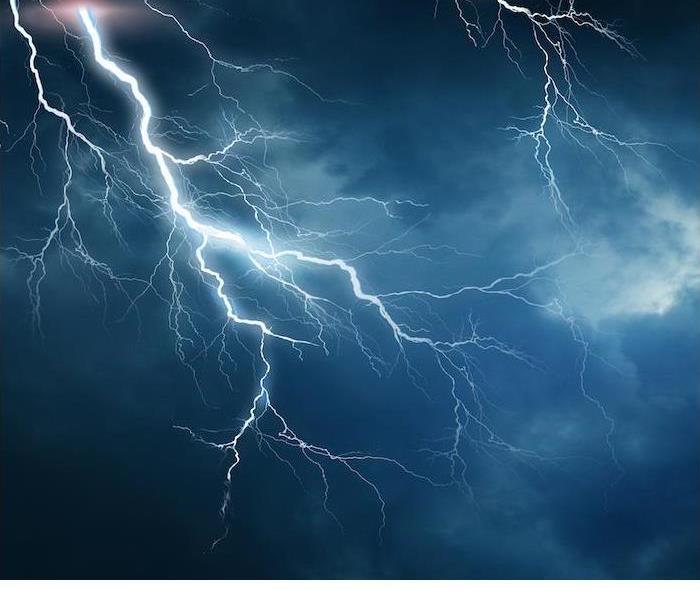The Most Common Hazards Created by Severe Storms | SERVPRO® of North Fort Worth
8/22/2022 (Permalink)
Severe weather can be devastating for homeowners. While most current homes are built to withstand these extreme weather conditions, many homes will experience some type of damage if a storm affects our area.
Strong winds and wind-related disasters throw debris all over town, as well as cause cold rain, snowstorms, lightning and flash floods, with hazards varying by the time of year and the type of storm. In any situation, these weather hazards put your property and its structure at risk of severe damage.
Depending on the kind of storm and events taking place, your home could face different degrees of damage. There are a lot of factors that influence the level of potential damage, including the landscape around your property, the geography of the region and the condition of your home’s foundation or building materials. (We admit, there’s also a bit of chance involved.)
It’s great to know about the many kinds of weather hazards, but knowing what may strike your specific area is even more crucial. Your Fort Worth home could be particularly at risk of hazards like droughts, floods and hurricanes.
You should never continue living in a storm-damaged home unless safety professionals have deemed it safe to live in. Most kinds of damage will be obvious, but you should always follow the rules set in place to avoid further losses.
Let’s go over the three main types of storm damage so that you can prepare yourself and your property:
Wind
This kind of damage ensues when structures are met with violent gusts that blow at dangerously high speeds. Tornadoes and hurricanes are the most common reasons for strong winds, but even thunderstorms can cause winds of up to 100 mph.
Violent winds can pick up debris around your yard and throw it into your car or the sides of your home. When a storm arrives, it’s essential to seek shelter inside and away from any windows or outside walls in case of shattered glass or walls pierced by debris.
You can also take action before a storm reaches our area to reduce wind damage. Clear your property of any branches, large rocks, unsecured furniture or decaying trees to prevent storing winds from using them to create damage.
Water
Water damage is a regular occurrence both during and after a storm. Heavy rain can allow water to collect outside your house even during a small storm. This water then leaks through any gaps in your windows and doors.
When there is enough water, it can leak into your foundation and lead to substantial infrastructure damage.
To reduce excessive water damage to your property, try using strategic landscaping to direct water away from your home rather than have it build up outside. Alternatively, you could build a rain garden, which is a lovely way to spruce up your yard and keep rainwater from creating a huge problem for your property.
You should also always keep your gutters clear so that they can function properly and keep water from leaking into your home through your roof. Clogged gutters can cause water to pool and leak down to the ground level by allowing water to pool and push its way inside your property from the top.
Impact
Another prevalent type of storm damage that can have disastrous consequences to your home is “impact damage.” This damage is caused by hazards like fallen trees or debris being thrown into your home by heavy winds. It’s anything that has an impact on your house or things on your land.
The single most effective approach to minimizing this type of damage is to cut trees that are close to your home and ensure that any dead trees are removed before Mother Nature brings them down on your house.
Weather-related calamities cost more than $145 billion in destruction in the United States alone. These suggestions can help you save a lot of time and money, as well as equip you with the knowledge to protect you and your family from disaster.
If a severe storm wreaks havoc on your home, contact our experts at SERVPRO of North Fort Worth. Our restoration professionals are trained to assess your damage and come up with a way to get your home back to its preloss state!
When you suffer storm-related damage to your home or business, it’s important that you know who to call! Contact us today to get your storm damage restoration started faster.






 24/7 Emergency Service
24/7 Emergency Service
